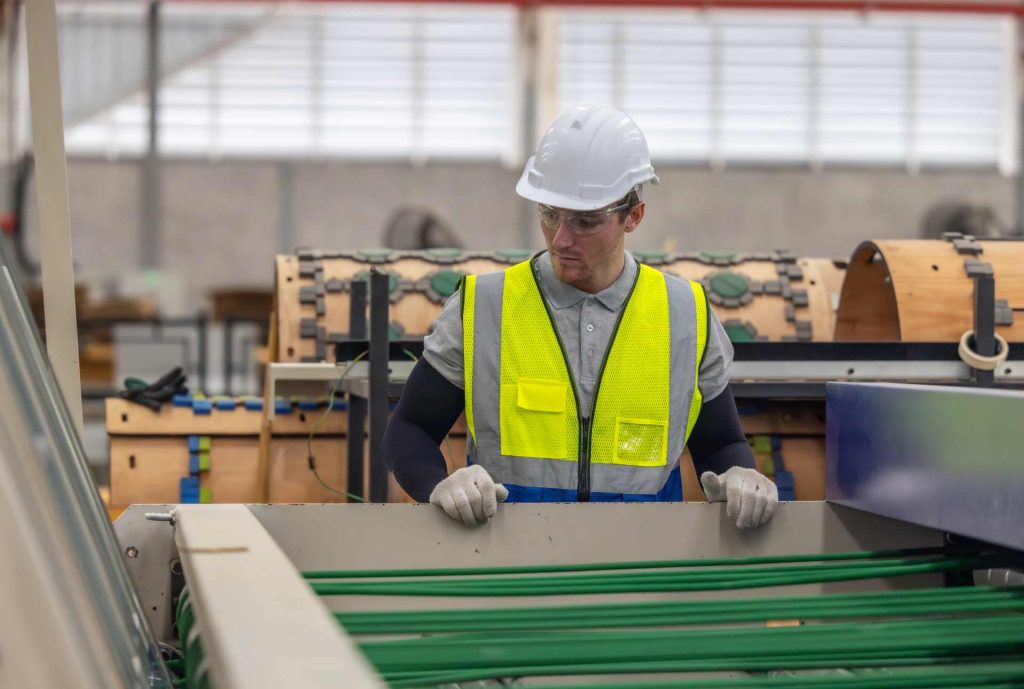Have you ever said to yourself “how is plasterboard made?” No? That’s OK – not many people have plasterboard on the mind, but we do. It’s one of our flagship products. Plasterboard is all around us – it’s one of the most successful innovations in residential and commercial construction. It is easy to miss, because it’s very good at looking like a variety of different surfaces and finishes, from timber planking to tile and brick to rendered cement. It’s out there everywhere, fire-resistant and termite-proof, making homes and businesses beautiful, and lasting for years with only minimal maintenance. It has enhanced countless builds and renovations, and it can do the same for yours.
Your Source for Plasterboard
BetaBoard is your go-to supplier in the Brisbane market for plasterboard and a broad range of building and plaster supplies. Visit one of our stores today and speak with our friendly staff about your project. Look through our products on our website, and get in touch online for more information or to organise a quote.
Making Plasterboard
Plasterboard is a composite, consisting mainly of gypsum and stucco, and sometimes plaster of Paris. These are mixed together with water to make a thick slurry, which is rendered out onto a cellulose fibre sheet in a continuous process. As the plasterboard moves down the production line, another fibre sheet is applied over the slurry as the panel is set to the desired thickness. The edges of the first fibre sheet are folded over so the slurry mixture is enclosed. Then the sheet travels to a cutting machine, drying and hardening as it goes down the line. By the time the panel reaches the cutter, it is dry enough to be cut. At the cutter, the production panel is cut and trimmed into smaller boards of final size. The final sized boards continue on to a longer drying process where all water is evaporated.
A Perfect Blend of Materials
Gypsum is actually a sedimentary rock – a crystalline mineral formed from earthen deposits on the floor of ancient oceans. Stucco used in plasterboard is the same as the familiar hard surfacing for exterior walls. These give plasterboard its excellent durability and resistance to fire. The fibre content acts as a binder, imparting toughness, and stability. Because plasterboard starts as a poured material, it can be shaped and moulded during fabrication, allowing a wide choice of textures and surface treatments.
High Relief and High Versatility
A great virtue of plasterboard is its ability to form high relief profiles. How is plasterboard made to do this? We’re glad you asked. Some of the most popular finishes for plasterboard represent styles of timber siding with straked joints or overlapped joints. This is made possible by plasterboard’s natural density and mouldability. The relief is formed as the slurry is poured and hardening, so it dries into the desired shapes. Plasterboard panels may also be produced with bevelled edges to accent joining lines, creating attractive geometric patterns on a broadwall surface. The material has so much density and depth that tongue and groove edging is available to assist in joining adjacent panels. Although it is very dense and strong, plasterboard is normally lighter than the legacy the materials it replaces.
Easy to Work With – Made to Last
Plasterboard very successfully represents complex built-up timber forms that are skill-intensive and time consuming to produce with legacy materials and tooling. Plasterboard arrives at the job site with the chosen shaping already built in. Installation is straightforward – plasterboard may often be nailed directly to timber or metal framing. It may be ordered pre-primed, so final surface painting can begin right away after installation. The finished wall becomes a significant design element and will stay strong and good-looking long after timber construction would perish.
Indoor, Outdoor and Everywhere
Plasterboard has been engineered to work very well in both exterior and interior settings. Interior panels can be produced to replicate wainscoting and other types of high-detail wall treatments, creating beautiful, classic looks in a fraction of the time they would take with legacy materials. Plasterboard is also right at home as an efficient smooth wall finish in less complex or minimalist interiors. Exterior panels can reproduce the look of brick, stone, and rendered cement – with a small fraction of the weight. Plasterboard has successful application through a very wide variety of architectural forms and styles.
Here to Answer Your Questions
We love to talk about plasterboard. We are always glad to answer the question “how is plasterboard made?” The more you know about plasterboard, the more you can see all the ways it makes new builds and renovations more beautiful, improves workflow, and cuts time spent in construction and finishing. It reduces maintenance through the life of the structure and can last many years longer than the legacy materials it replaces.
BetaBoard has plasterboard available in a variety of styles, we carry a very large stock of plastering supplies, and we deliver it all to your job site. Browse our products online, where you can order plasterboard or contact us for a quote. Best of all, come and visit us at one of our convenient stores. Stop by and let us show you the great things plasterboard can do for your project.














